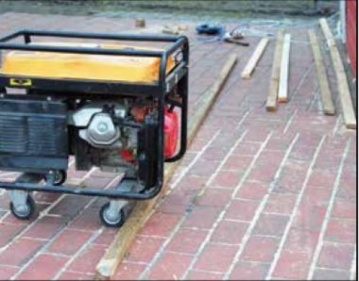
Extra time around the house this summer may be welcome for avid DI-Yers. With lists of upgrades and renovations to tackle, homeowners can rely on portable generators to power tools such as drills, circular saws and more when working outside.
“When used properly, a portable generator is a convenient and efficient power source for a wide range of home repair and restoration projects,” said Susan Orenga, executive director of the Portable Generator Manufacturers’ Association. “However, when not used properly, portable generators may pose some safety risks that can be minimized through proper use and precautions.”
Generators come in many varieties, from those designed with professional features such as the durability needed to endure the rigors of a job site, to those more suited for at-home DIY projects. Proper usage and selecting the right portable generator to power your construction project are important steps toward protecting your safety.
Consider these safety tips: Calculate the necessary wattage. With use in a variety of situations, you should calculate the wattage needed to help determine the right size generator. For example, a hand drill typically requires 600 watts, while circular saws and work lights may require twice that amount.
Run the required maintenance. Regularly check your generator to ensure it starts and operates properly.
Select generators designed to meet the ANSI/PGMA G300-2018 enhanced safety standard with carbon monoxide shut off detection.
One notable safety risk associated with portable generators is the carbon monoxide they produce while in use. If you’ll be buying a new generator, you can find enhanced safety measures in models that comply with the ANSI/PGMA G300-2018 standard, which includes carbon monoxide sensors and shut-off features to address possible carbon monoxide buildup when misused.
To help further mitigate the carbon monoxide-related hazards related to portable generator misuse, rely on these tips from PGMA’s Take It Outside campaign:
Never run a portable generator indoors, including garages, basements, crawl spaces, breezeways, sheds or other partially enclosed spaces.
Always place a portable generator downwind, and point the engine exhaust away from occupied spaces, such as where you’re operating the power tool.
Know that you cannot smell, see or taste carbon monoxide, so you may not be aware of a dangerous buildup.
If you feel sick, dizzy or weak while using your portable generator, get to fresh air immediately and call 911 for emergency medical attention, if needed.
Always refer to the generator’s operator manual for further information about safe operation and potential hazards.
For more information about portable generator safety, visit takeyourgeneratoroutside.com, and find more information about generators at pgmaonline.com.
